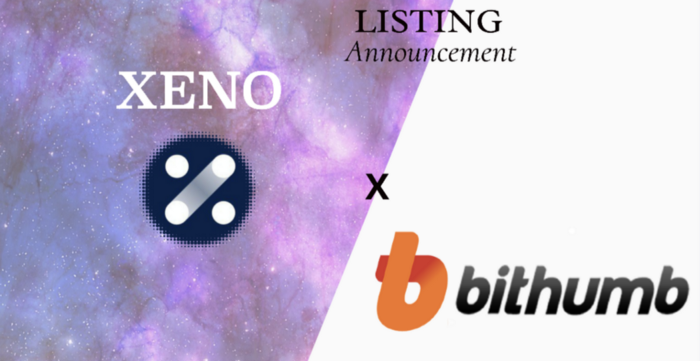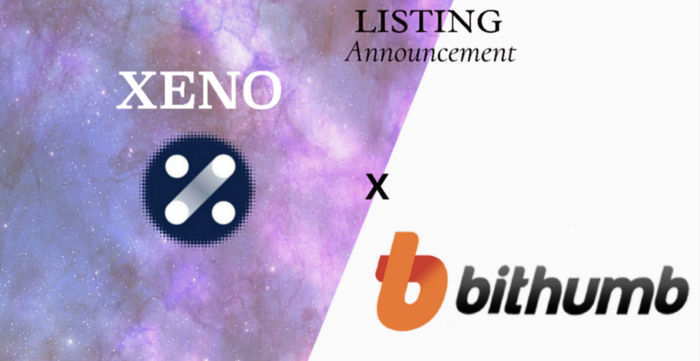Blogs
Stellar Adopts the Lightning Network in a Flash

Stellar is gaining ground in the cryptocurrency sphere, with an increasing number of major partnership announcements. However, Stellar co-lead Jed McCaleb has admitted that the blockchain project may suffer from scalability issues in the near future. If all of these partners use the Stellar platform to its maximum potential, the system could see slowdowns and traffic jams. Bitcoin saw the same issues until they adopted the Lightning Network protocol. The clever code base for the Lightning project helps circumvent the inherent limitations of traditional blockchain tech. Using this workaround, transaction volume increases exponentially and ensures that traffic is a near non-issue.
Stellar Signs on to the Lightning Network
In an attempt to curtail the possibility of slowdowns, Stellar announced that they will be integrating Lightning technology. This early adoption ensures that scalability issues removal before they can become a problem. This type of forward facing pre-planning speaks volumes about the foresight of Jed McCaleb and his Stellar team. It is inherently easier to tackle a perceived problem before it has an impact on the blockchain itself.
Messaging app Kik recently abandoned the Ethereum blockchain due to scalability issues. Instead, they will be building their transactions on the Stellar platform. Although the platform would currently be unable to fully support Kik’s plans, Lightning could change that. Lightning Network technology would allow the Stellar system to support not only Kik’s ambitions but also those of partner IBM. IBM intends to use the Stellar network to support remote banking projects, another potentially resource draining partnership.
How Does the Lightning Network Work?
Bitcoin’s block size and transaction volume became an issue at the end of 2017. As trading volume increased to a previously unheard of amount, the blockchain became bogged down. Transactions not only took obscene amounts of time to complete, but the priority system created extremely high fees. The Lightning Network project foresaw this situation and began development over a year before the spike. Their project relies on the ability to create an additional payment layer on top of the parent blockchain.
This second layer is created through inter-person connections. Anyone involved in transactions opens a channel directly to their receiver. Subsequent transactions by either user open additional channels that can use the original as throughput to complete transfers between disparate users. In this way, transactions complete without establishment on the public blockchain. When a channel closes at the request of a participant, the transactions proceed to the public blockchain.
This allows the second layer to handle the vast majority of the transactions, sparing the public blockchain from that traffic. For legacy coins like Bitcoin, the Lightning Network is a sorely needed upgrade that ensures the continued feasibility of the cryptocurrency. For new projects like Stellar, it offers an opportunity to avoid the problem before it appears.
Atomic Swaps on the Lightning Network
One of the most attractive aspects of Lightning Network adoption is the ability to make trades across blockchains. This would allow a user that owns Stellar Lumens to theoretically trade them directly for Bitcoin – without a third party exchange. This creates a new form of liquidity that was previously infrequent or directly unavailable in the cryptocurrency world.
This functionality is a result of smart contracts. These contracts are executed within a certain time frame, dependent on the currency accurately arriving. If that fails to happen, the transaction is canceled and all currency returned to its original owners. The trust-less factor of blockchain based smart contracts avoids any fraudulent transactions. In this way, transactions across chains can be as safe and secure as those within a single chain.
Stellar Prepares for the Future
The Lightning Network is one of the most significant upgrades to blockchain functionality since the original release of the technology. As such, the cryptocurrencies that adopt this platform early will rightfully appear as forward thinking, progressive and invested in the success of their product. These are strong indicators of long-term validity for investment. Stellar is one of the first, continuing their commitment to banking the unbanked while still producing value for their investors. Stellar is challenging other top cryptocurrencies, jockeying for a top slot by market cap. Given their fairly recent release, their performance is impressive – and with decisions like Lightning adoption, likely to continue.
We will be updating our subscribers as soon as we know more. For the latest on XLM, sign up below!
Disclaimer: This article should not be taken as, and is not intended to provide, investment advice. Global Coin Report and/or its affiliates, employees, writers, and subcontractors are cryptocurrency investors and from time to time may or may not have holdings in some of the coins or tokens they cover. Please conduct your own thorough research before investing in any cryptocurrency and read our full disclaimer.
Image courtesy of John Fowler via Flickr
Altcoins
XNO Token of Xeno NFT Hub listed on Bithumb Korea Exchange


Hong Kong, Hong Kong, 25th January, 2021, // ChainWire //
Xeno Holdings Limited (xno.live ), a blockchain solutions company based in Hong Kong, has announced the listing of its ecosystem utility token XNO on the ‘Bithumb Korea’ cryptocurrency exchange on January 21st 2021.
Xeno NFT Hub (market.xno.live ), developed by Xeno Holdings, enables easy minting of digital items into NFTs while also providing a marketplace where anyone can securely trade NFTs.
The Xeno NFT Hub project team includes former members of the technology project Yosemite X based in San Francisco and professionals such as Gabby Dizon who is a games industry expert and NFT space influencer based in Southeast Asia.
NFT(Non-Fungible Token) technology has recently gained huge focus in the blockchain arena and beyond, making waves in the online gaming sector, the art world, and the digital copyrights industry in recent years. The strongest feature of NFTs is that “NFTs are unique digital assets that cannot be replaced or forged”. Unlike fungible tokens such as Bitcoin or Ether, NFTs are not interchangeable for other tokens of the same type but instead each NFT has a unique value and specific information that cannot be replaced. This fact makes NFTs the perfect solution to record and prove ownership of digital and real-world items like works of art, game items, limited-edition collectibles, and more. One of the ways to have a successful…
Altcoins
Should Crypto Projects Devote Resources to Community Growth and Marketing?

2020 has been an incredible year for crypto as investors have generated windfall profits and crypto projects have seen their businesses gain the spotlight they’ve been looking for. While Bitcoin has received most of the attention after major institutional investors announced they were accumulating the increasingly scarce asset, many altcoins have also seen their fair share of glory. When looking at all the big winners of the past year, the first project that probably comes to mind is Chainlink, having appreciated by more than 550% YTD and now valued at over $4.5 billion. But, the actual biggest winner of the year is HEX with a YTD return of over 5,000%.
I mention both of the above projects as they have each taken slightly different paths to achieve greatness. Chainlink has devoted resources toward building a fundamentally sound business with many strategic partnerships while HEX has spent vast sums of money on marketing and promotion. Both approaches are valid, but one thing is certain, it is absolutely imperative for crypto projects to let the crypto community know what makes them special. Of course, one of the reasons that makes crypto so valuable is the powerful blockchain technology that most projects are utilizing.
Cryptocurrency vs. Blockchain Technology
It’s important to make a distinction between blockchain technology and cryptocurrency. Although they are often used interchangeably, they are different. Blockchain technology and crypto were both created after the 2008 financial crisis, but cryptocurrency…
Altcoins
XENO starts VIP NFT trading service and collaborates with contemporary artist Hiro Yamagata


Hong Kong, Hong Kong, 24th December, 2020, // ChainWire //
The XENO NFT Hub (https://xno.live) will provide a crypto-powered digital items and collectables trading platform allowing users to create, buy, and sell NFTs. Additionally it will support auction based listings, governance and voting mechanisms, trade history tracking, user rating and other advanced features.
As a first step towards its fully comprehensive service, XENO NFT Hub launched a recent VIP service to select users and early adopters in December 2020 with plans for a full Public Beta to open in June 2021.
“NFTs are extremely flexible in their usage, from digital event tickets to artwork, and while NFTs have a very wide spectrum of uses and categories XENO will initially focus its partnership efforts and its own item curation on three primary areas: gaming, sports & entertainment, and collectibles.”, said XENO NFT Hub president Anthony Di Franco.
He also added “This does not mean we will prohibit other types of NFTs from our ecosystem However, it simply means that XENO’s efforts as a company will be targeted into these verticals initially as a cohesive business approach.”
Development and Procurement Lead, Gabby Dizon explained, “Despite our initial focus, we found ourselves with a unique opportunity to host some of the works of Mr. Hiro Yamagata. We are collaborating with Japanese artist Hiro Yamagata to enshrine some of his artwork into NFTs.”
Mr. Yamagata has…
-

 Blogs6 years ago
Blogs6 years agoBitcoin Cash (BCH) and Ripple (XRP) Headed to Expansion with Revolut
-

 Blogs6 years ago
Blogs6 years agoAnother Bank Joins Ripple! The first ever bank in Oman to be a part of RippleNet
-

 Blogs6 years ago
Blogs6 years agoStandard Chartered Plans on Extending the Use of Ripple (XRP) Network
-

 Blogs6 years ago
Blogs6 years agoElectroneum (ETN) New Mining App Set For Mass Adoption
-

 Don't Miss6 years ago
Don't Miss6 years agoRipple’s five new partnerships are mouthwatering
-

 Blogs6 years ago
Blogs6 years agoCryptocurrency is paving new avenues for content creators to explore
-

 Blogs6 years ago
Blogs6 years agoEthereum Classic (ETC) Is Aiming To Align With Ethereum (ETH)
-

 Blogs6 years ago
Blogs6 years agoLitecoin (LTC) Becomes Compatible with Blocknet while Getting Listed on Gemini Exchange















